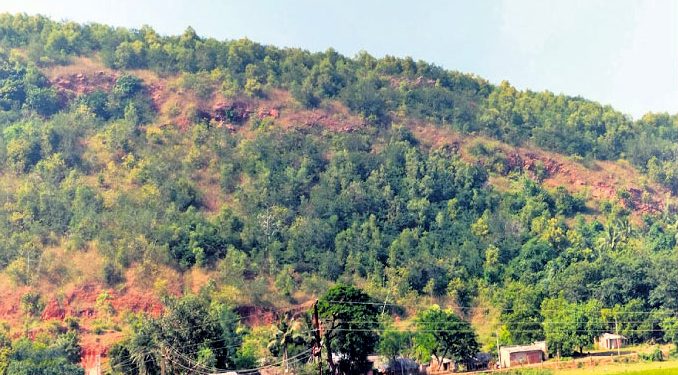Jajpur: Odisha government has decided to mine Parabhadi hill at Bandareswar and Kesaraipur areas under Darpan tehsil in Jajpur district for stones required in Puri beautification project, a source said Friday.
Meanwhile, many local residents in Jajpur have vehemently opposed the government’s decision in this regard as Parabhadi hill is a historic site and has an ancient Buddhist stupa which is in poor shape owing to lack of conservation and proper upkeep.
“The historical stupa built in third century AD is the oldest of ancient Buddhist stupas located in the Diamond Triangle of Jajpur district. The Archeological Survey of India (ASI) has not spent a single pie on its maintenance since its discovery for which it is in a state of complete neglect,” a local intellectual Pradipta Kumar Bhuyan said.
Odisha Mining Corporation (OMC) will carry out the mining and make arrangements to send the excavated stones to Puri for the purpose.
Also read: Deep depression turns into Cyclone Jawad, likely to make landfall around Puri, December 5
It has been also decided that a patch of the hill area of around 114 acres at Sukhuapada under Bandareswar mouza and around 47 acres under Kesaraipur mouza will be mined in the first phase.
The OMC has already applied for environment clearance to conduct the mining. Puri beautification and development project was chalked out earlier under the Abadha yojana, the source informed.
On being contacted, Darpan tehsildar Pradeep Kumar Sethi said, “Necessary steps are being taken after the government decided for mining of khandelite stones from Parabhadi hill. However, the mining activities will be conducted in remaining parts leaving apart the Buddhist stupa.”
It is pertinent to mention, in 1994, ASI took over the upkeep of the Buddhist stupa. However, so far, it neither excavated the site nor worked for its conservation.
In 2005, Parabhadi hill was partly leased out, which was opposed by a local outfit named Buddhayan. The outfit had filed two public interest litigations (PILs) in Orissa High Court February 23, 2005 and September 29, 2005 appealing the court to order the government for cancellation of the accorded lease.
The court then ordered accordingly, acting on which erstwhile Collector of Jajpur Saswat Mishra along with a team inspected the Parabhadi hill and suggested in his report that it should not be mined. The lease was subsequently cancelled.
Parabhadi Buddhist stupa was discovered at the same time when historians discovered the world-famous Lalitgiri shrine and undertook its excavation between 1975 and 1982. The ASI had then claimed the necessity for excavation and conservation of the Buddhist stupa. Subsequently, conservation and excavation were forgotten.
The Parabhadi stupa was 40-ft in height when ASI took over the site. Due to constant soil erosion and for several other reasons, the height of the stupa has reduced to 15 feet and it may very well crumble owing to lack of maintenance.
Noted historian and Buddhist researcher Harish Chandra Prusty said the Parabhadi stupa came to be known when Chinese traveller Hiuen Tsang visited Odisha during his tour of India. He visited the site and conducted a review of the ancient stupa. The stupa finds its mention in the ‘Si-yu-ki’ book written by the Chinese traveller.
PNN







































